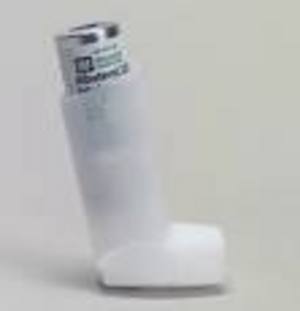You thought the yeast infection has disappeared but this time it’s back, and with a vengeance. It’s itchy, embarrassing, and persistent-very persistent. You’ve tried everything from topical creams to even changing your diet and still found no solution to this extreme annoyance. Yeast infections persist through a majority of reasons such as hygiene, antibiotics, and even diet. The longer a yeast infection is left untreated, the harder it is to get rid of. The overgrowth of yeast may travel to other parts of the body, like the digestive tract, throat, and even the skin. The overgrowth will make it even harder to get rid of.
A yeast infection is caused by an overgrowth of a type of fungus called Candida Albicans. The yeast infection itself is also commonly known as candidaisis. Symptoms may include:
. A thick discharge similar to the consistency of cottage cheese. The discharge is a pale whitish
color.
. The vulva may be red and irritated and extremely itchy.
. An odor that is not very pleasant.
. May even be burning upon urination.
. Pain during intercourse.
We naturally have a small amount of yeast in the gut and vaginal area. Special flora, (good bacteria) keep the yeast in control. Whenever this cycle is disrupted, the yeast cells grow out of control. Frequent pool swimmers are likely to get a vaginal yeast infection due to the chlorine killing off the beneficial bacteria that’s naturally present. To top it off, the combination of the wet and warm climate from the swimsuit makes it a perfect habitat for yeast to colonize. The colon also contains small amounts of yeast as well. Antibiotics are well known for causing yeast infections, due to the fact that they destroy both the yeast and lactobacillus micro-organisms. It’s easier for the yeast cells to accumulate afterward, thus outgrowing the flora. These are just a few of many factors that may cause yeast infections. The yeast may grow, spreading throughout the body making it even harder to get rid of, but are ways of getting rid of the yeast for good.
1. Probiotics – Lactobacilli are the beneficial bacteria present in the gut and vagina. These bacteria help to ensure that yeast are kept in very small numbers and don’t spread elsewhere. Pick up a probiotic supplement, preferably 30 billion microorganisms or higher for each serving. The http://www.candida-albicans-cure.com/probiotics.html site, lists the beneficial bacteria in order of importance that treat Candida. These are just a few of the bacteria off the list:
.Lactobacillus Sporogenes
.Bifidobacterium Bulgaricus
.Lactobacillus Bulgaricus
Go to the site and write down the entire list of the probiotic strains. Find a supplement with at least 3-5 of the top listed probiotic strains. Although some topical agents such as Monistat have worked for some people, adding a probiotic supplement to the mix could help significantly. The Monistat cream might help in controlling the yeast. Adding probiotics formulas on top of that could help to restore the beneficial bacteria while yeast numbers are low. Foods containing probiotics are a great alternative also.
2. Making a few Changes – Diet is another issue in the formation of yeast overgrowth. The constant binging of unprocessed and yeast-heavy foods may cause yeast to grow wild. A few dietary changes will make sure that you are not feeding the yeast or allowing them to grow further. Cut down on starch and other foods containing yeast like bear and alcohol. Slow down consumption of carb-forming foods, fungus such as mushrooms, and simple sugars. These are the types of food that the yeast feed off of. Eat more yogurt, and kefir. Kefir naturally contains living microorganisms (good flora such as lactobacilli) that help sustain a natural balance and control the yeast. Drink about 2 servings of kefir each day. Many yogurt companies are expanding the probiotic range in yogurt. Maybe you are familiar with the word “live, living, or cultivated,” labeled somewhere on the package. Try drinking the ever-popular Yakult drinks. These miniature dairy-like drinks taste great, and are filled with probiotics. They contain the same natural flora that’s present in the gut and vagina. Try not to over-exert the consumption of these drinks: both the kefir and Yakult. They may give you the runs. Some individuals may not tolerate them well and have to start off slow, gradually building their serving sizes.
3. Enzymes – Considering taking digestive enzymes. Its great way to keep Candida that has migrated to the intestines and bowels, under control. The enzymes break down starch and other molds that have been missed by enzymes excreted from the pancreas. The yeast has nothing to feed off, and dies as a result. Other enzymes such as cellulase and protease prove beneficial as well. Yeast is comprised of cellulose and protein fibers. These two enzymes break down the protein and cellulose fibers that protect the yeast. Also look for supplements containing the amylase enzymes. Amylase enzymes break down carbohydrates, specifically starches and sugars that yeast feeds on. I would recommend any enzyme formulations made by “Enzymedica,” particularly because their enzymes are vegetable-based and contain high activity levels to ensure its efficiency.
4. Sanitation – Keep the environment as dry and air circulated as possible. As stated earlier, the yeast flourishes in warm, wet environments. Wear loose cotton panties and try to avoid wearing nylon or satin at all costs. These fabrics make it very hard for moisture to evaporate and air to pass through. Always make sure that the vaginal area is properly dried after urinating. Always wipe from front to back so that no fecal matter will contaminate the vaginal area and further worsen the condition. Always wash hands clean when dealing with or inserting anything into the vagina. Always be careful and take the necessary precautions.
Important Things to Consider – Consult a medical professional to see if you really have a yeast infection. Yeast infections are fungal overgrowth. It is a problem involving a fungus, not bad bacteria. If bad bacteria overgrowth has occurred then the problem probably lies in what is known as Bacterial Vaginosis. BV is a commonly mis-diagnosed by individuals who assume they have a yeast infection. The symptoms are different but get associated with a yeast infection because yeast infections are so common. The causes may be different in such means that actually causes bad bacterial overgrowth. Douching, and not correctly wiping after releasing waste are a couple examples. Bacterial Vaginosis can be noted as a sexually transmitted disease because it can be passed on to a partner. The fact that the fungus and the bad bacteria are two different things is to be taken seriously and to be spoken to a gynecologist about, before taking independent action.
http://www.candida-albicans-cure.com/probiotics.html – probiotic listings. Scroll down the page till you see the list of beneficial bacteria.



